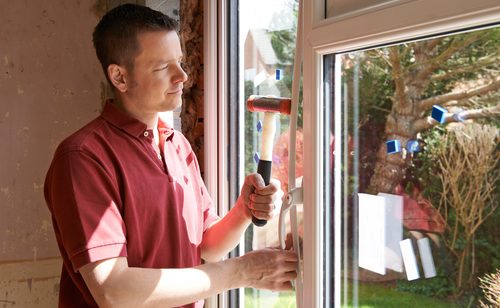Windows play an important role in our homes. They provide us with natural light and serve as a connection to the outside environment. Windows, on average, account for about 15% of our home wall space. Windows are also one of the primary culprits when it comes to home energy inefficiency. While caulking around windows is helpful in minimizing air leaks, it turns out that the glass itself is a source of energy loss. Glass is a poor insulator and does not do you any favors when it comes to saving energy. Fortunately, high-tech window coating technologies have come to the rescue.
Deconstructing Light
There is no need to relive the trauma of your high school physics class! The interaction between light and windows is not overly technical. We simply need to break light into its major components. Ultraviolet light is at the low wavelength end of the solar energy spectrum. This is the type of light responsible for sunburns. It is also the reason that natural light entering our homes causes our artwork and furniture upholstery to fade.
On the other end of the solar energy spectrum is infrared light. Infrared light manifests as heat energy entering and exiting our homes through window glass. Between ultraviolet and infrared lies visible light.
Standard glass windows both transmit and reflect all three light components to some extent. The problem lies in that we need our windowpanes to be selective about what they transmit and reflect in order to maximize energy efficiency while maintaining their visual quality.
Low Emissivity Windows
Low emissivity (low-e) windows have their panes coated in microscopic layers of metallic oxides. Silver is the most commonly used metal in these coatings. Low-e windows block much of the ultraviolet light and control the infrared light that passes through glass. The best part is that they accomplish this without compromising visible light. Therefore, we enjoy greater energy efficiency without sacrificing our view.
To understand low-e glass, we need to distinguish between short and long-wave infrared energy. Infrared light from the sun is short-wave infrared energy. Heat radiating off objects in our home is long-wave infrared energy. Low-e glass that reflects long-wave infrared helps our home retain its inside temperature. Think of it as a thermos that keeps it contents, whether hot or cold, at the desired temperature.
When it comes to solar heat (short-wave infrared), there are different types of low-e glass depending on your climate. In cooler parts of the country, you want the glass to allow short-wave infrared to pass through the glass and heat your home. This glass transmits short-wave infrared and reflects long-wave infrared. Therefore, it allows your home to gain heat from the sun and then retain that heat.
In moderate and warmer climates, you want the low-e glass to reflect both short and long-wave infrared. This reduces solar heat gain in the summer while reflecting back the cooler temperatures in the house achieved through air conditioning.
Low-e Window Terminology
Unfortunately, the terminology used to measure the effectiveness of low-e window glass is a bit messy.
Visible Transmittance (VT) is the fraction of visible light that passes through the glass. Values range from 0 to 1. Look for products with higher numbers as they have the lowest impact on your view.
Solar Heat Gain Coefficient (SHGC) is the fraction of solar radiation admitted through the window. It includes the energy directly transmitted in addition to energy absorbed and released as heat inside the home. Lower numbers mean the window transmits less solar heat.
Light to Solar Gain (LSG) is the ratio between SHGC and VT. Higher numbers mean more light is transmitted without adding excessive amounts of solar heat.
U-factor is the rate the window conducts non-solar heat flow. Lower numbers mean greater energy efficiency.
Saving Energy with Low-e Windows
Low-e windows can cost 10% to 15% more than standard windows. However, they can reduce home energy loss by 30% to 50%. They represent a huge opportunity for lowering your gas and electricity bills. Be sure that the low-e windows you select are appropriate for your climate. Also, keep in mind that it pays to shop around to save money on both the windows and installation.
Finally, you might consider having solar film installed over your existing windows. Both professional and do-it-yourself options are available at a fraction of the cost of new windows. These films are not the highly-reflective quick-peeling products of the past. These are generally polyester laminates that mimic the appearance and performance of low-e coated glass. They are a good option to gain some energy savings without breaking your budget.



Very useful details about Window Coatings can Lower Your Energy Bill, so thank for this article.